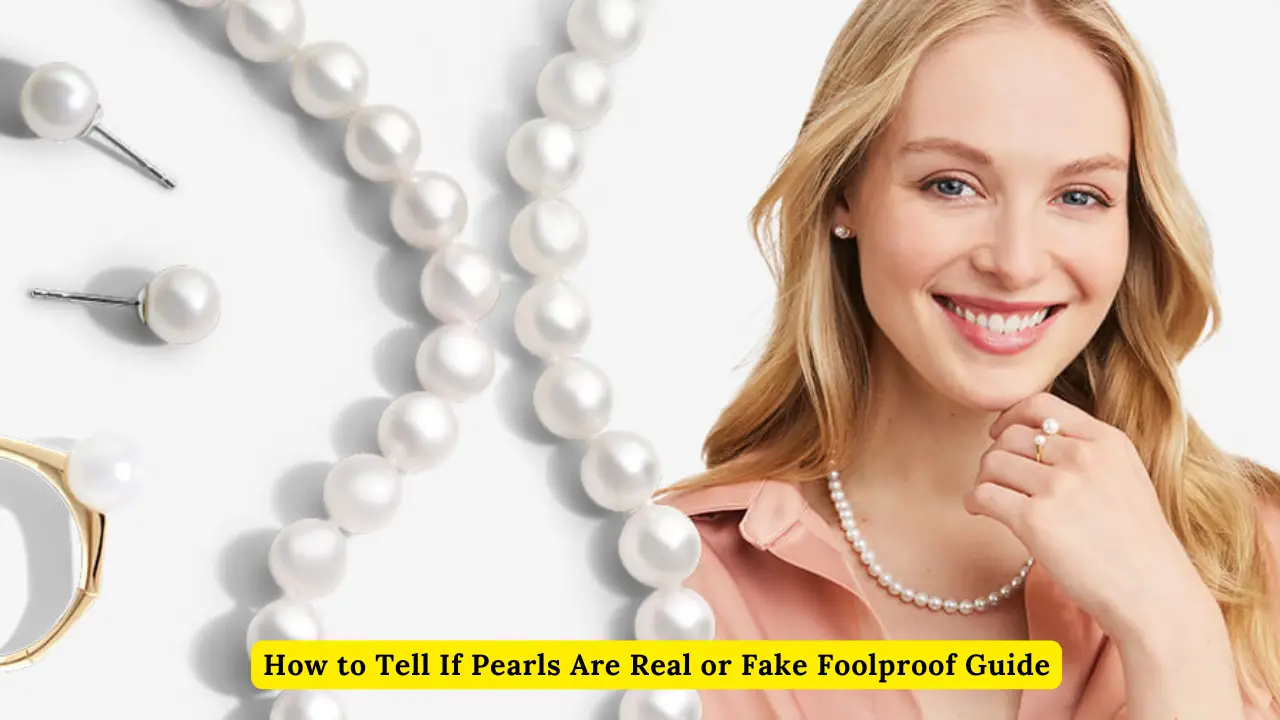Pearls, often dubbed as the “queen of gems,” have been cherished for centuries for their timeless elegance and natural beauty. Whether you’re considering a pearl purchase or evaluating a family heirloom, distinguishing between real and fake pearls is crucial. This comprehensive guide provides a foolproof method to identify genuine pearls and avoid counterfeit ones. How to Tell If Pearls Are Real or Fake Foolproof Guide
Pearl Types
Before diving into the detection methods, it’s important to understand the different types of pearls:
- Natural Pearls: Formed organically in oysters or mollusks without human intervention.
- Cultured Pearls: Created through human intervention by implanting a nucleus into the mollusk.
- Imitation Pearls: Manufactured from materials such as glass, plastic, or resin to mimic the appearance of real pearls.
Visual and Tactile Tests for Authenticity
1. The Tooth Test
One of the simplest and most reliable ways to verify the authenticity of a pearl is the tooth test. Gently rub the pearl against the edge of your teeth. Real pearls will feel gritty or slightly rough due to their natural texture, whereas imitation pearls will feel smooth and slippery. This texture is due to the unique layering of nacre in natural and cultured pearls.
2. The Luster Test
The luster of a pearl is a key indicator of its authenticity. Genuine pearls exhibit a deep, multi-dimensional luster that reflects light in a way that artificial pearls cannot. Hold the pearl under a light source and observe the sheen. Authentic pearls will display a rich, iridescent glow with a complex play of light, while fake pearls often have a more superficial shine.
3. The Surface Test
Inspect the pearl’s surface closely. Real pearls are rarely perfectly smooth. Minor blemishes, irregularities, or natural ridges are common characteristics of genuine pearls. On the other hand, imitation pearls often have a uniform, glossy surface. Use a magnifying glass to check for imperfections or irregularities, which are indicators of a natural pearl.
Advanced Techniques for Verification
4. The Nacre Test
Nacre is the substance that forms the layers of a pearl. Real pearls are composed of multiple layers of nacre. You can test this by examining the edge of the pearl. Use a sharp tool or needle to gently scratch the surface. If the pearl is real, you will see a layered structure beneath the surface. Fake pearls, made from solid materials, lack this layered nacre and may show damage more quickly.
5. The Weight Test
Real pearls are denser than imitation ones. Hold the pearl in your hand and compare its weight to that of similar-sized fake pearls. Authentic pearls will feel heavier due to their natural composition. This method is not foolproof but can be a useful supplementary test.
6. The Reflection Test
Use a magnifying glass or jeweler’s loupe to inspect the reflections on the pearl’s surface. Real pearls will have a soft, diffuse reflection that appears almost blurred, due to the layers of nacre. Imitation pearls will often have a sharp, clear reflection that lacks depth.
Professional Verification Methods
7. X-Ray Fluorescence
For those seeking the most precise verification, X-ray fluorescence (XRF) is a professional method used to identify the composition of pearls. This technique can distinguish between natural and cultured pearls based on their internal structure and chemical composition.
8. NMR Spectroscopy
Nuclear Magnetic Resonance (NMR) Spectroscopy is another advanced technique used to analyze the organic compounds in pearls. This method can provide detailed information about the pearl’s composition and confirm its authenticity.
Additional Tips for Identifying Real Pearls
9. Check the Drilling
The way pearls are drilled can offer clues to their authenticity. Real pearls often have irregular, uneven holes because they are drilled after being harvested. Fake pearls might have perfectly symmetrical holes, as they are often mass-produced.
10. The String Test
Observe the string or thread used to string the pearls. High-quality pearls are typically strung on silk or a high-quality thread that matches the color of the pearl. Imitation pearls might be strung on synthetic threads that are not as durable or aesthetically pleasing.
11. The UV Light Test
Expose the pearl to ultraviolet (UV) light. Natural pearls will often exhibit a distinct glow under UV light, which is a sign of their organic nature. Fake pearls may not show this fluorescence or might exhibit an artificial glow.
Conclusion
Determining whether pearls are real or fake involves a combination of visual, tactile, and advanced tests. By applying the methods outlined in this guide, you can confidently assess the authenticity of pearls and ensure that your investment is genuine. Whether you are buying new pearls or evaluating an existing collection, these techniques will help you avoid common pitfalls and make informed decisions.
